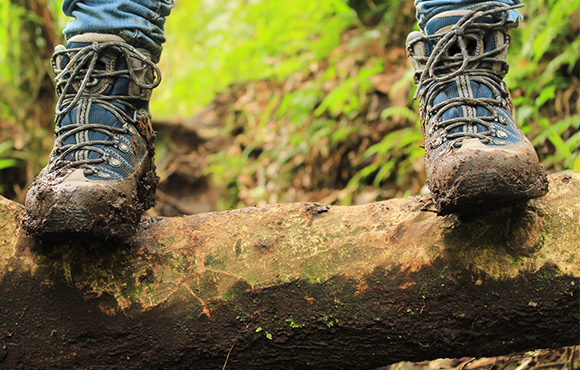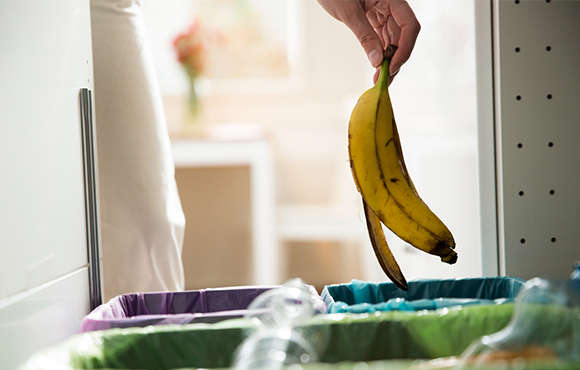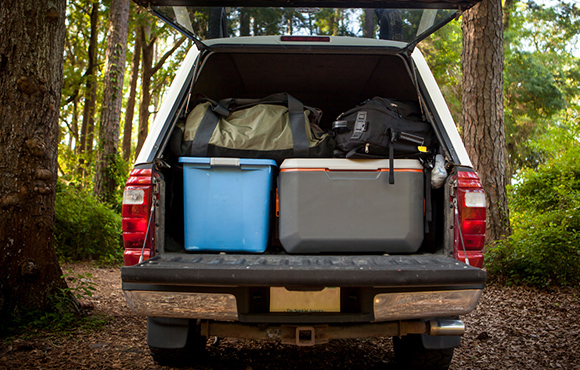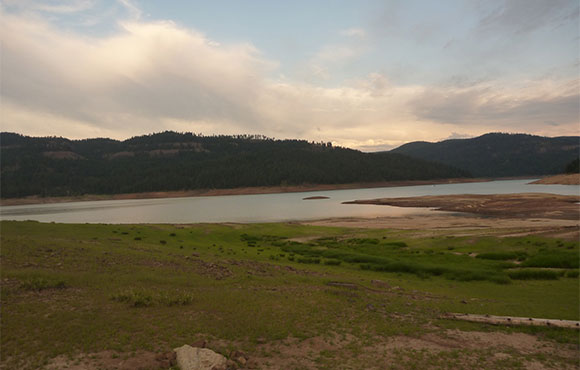How to Store Your Camping Gear in 5 Easy Steps

Step #1: Clean Everything First
Want to improve the lifespan of your camping gear and simplify packing for your next trip? Clean everything before you store it. Though you'll need to clean mud, dirt, sand and spills off of pretty much everything, here are a few specific cleaning tips for your favorite gear.
• Boots: Wash with warm water and a brush to remove excess dirt. Avoid using soap, as it can break down the cushion in the midsoles and clog some types of mesh.
• Sleeping bags: Most can be cleaned in front loading washers; just make sure you read the cleaning instructions before you try.
• Tent: Set up in the yard or driveway and remove as much dirt as you can with a sponge or rag. Rinse with a hose. Never put tents in the washing machine and avoid using household cleaners, as it will ruin any water repellent coatings.
• Backpack: Scrub with a mild detergent in a plastic tub. Never throw your pack in the washing machine.
• Water bladder/bottles: Soap and water should do the trick, but if you've got mildew inside use a diluted bleach solution to remove spores and store in the freezer.

Step #2: Air It Out
Whatever you do, don't rush the dry time for your gear. Mold and mildew can ruin your expensive tent, sleeping pad and sleeping bags if you decide to pack it away before it's free of moisture. After you've scrubbed and rinsed everything, set it out in the sun for longer than you need to, just to be safe. Keep your tent set up to dry and hang your sleeping bag so that it's unzipped and completely open on a rack or clothesline.
Don't overlook your cooking equipment, boots and clothing, which will also need to be completely dry before storage.

Step #3: Remove Batteries
If you plan to store electronic camping gear for longer than a month or two, it's a good idea to remove the batteries first. This will help prevent corrosion and battery discharge that can ruin expensive equipment. Common items you should check include:
• Flashlights
• Stoves
• Headlamps
• GPS devices
• Radios

Step #4: Get Rid of Food and Fuel
Forgetting to remove food from the rest of your camping supplies can attract pests and other creatures you probably don't want around. Not only can it make for a surprise when you decide to use your things again, some pests can eat through your gear and cause irreparable damage.
You should also empty any fuel bottles from your kitchen equipment and remove pressurizers from liquid-fuel stoves to store safely.

Step #5: Pack Your Gear in Storage Containers and Use Labels
Once everything is clean and dry and you've gotten rid of all the food and fuel, you'll want to pack your gear in dedicated storage containers. This will help you save space and make transportation much easier. It can also help keep moisture and bugs from getting into your things while they're packed away. Look for containers that are durable with good handles and secure latches.
If you want to take things a step further, pack smaller containers inside the larger ones. Label all your containers to keep things organized and easy to find, removing the need to rummage through all your gear when you're looking for a specific item.
Keep in mind though that while storage containers can be a good way to store kitchen gear, medical supplies, tools and clothing, it's not the best option for things like sleeping bags and sleeping pads. Rolling your sleeping bag inside the stuff sack can damage the insulation over time, and folding a sleeping pad to fit inside of a container will cause tears and creases. Instead, try to hang these items in a closet or keep flat underneath a bed.

Other Storage Tips
Use these other helpful storage tips to keep your gear safe and clean and ready to use the next time you need it:
• Try to keep all of your gear in a dedicated space instead of keeping it in multiple places around the house. This will make things easier to find when you need them.
• Keeping your gear in a closet inside the house is ideal. If you don't have the space and need to use your garage or basement as storage, excessive moisture could be a problem.
• Disassembling your stove is a good idea before you store it. When it's time to use it again, check the O-rings for cracks or damage.
• Get rid of anything you don't use, which will help you fit your gear in a smaller area.
• A multi-shelf rack makes it easy to keep things organized and will keep your gear off the floor.
• If you have the money, buy opaque storage bins. This will protect your gear from UV light, moisture and dust.
• Keep the caps off your bottles and water bladders during storage to allow airflow.

You Might Also Like...
Potatoes, gemstones and Yellowstone National Park aren't the only things worth the trip to Idaho. The diverse state is home to 26,000 miles of streams and rivers and over 3,000 natural lakes (yes, you read that right ... 3,000) that offer year-round fishing opportunities. In Idaho, anglers can enjoy casting their lines for 42 different types of game fish species, including giant white sturgeon, wild trout, smallmouth bass and salmon.
Don't let this great state off the hook, and plan your next fishing excursion to one of these great fishing holes.